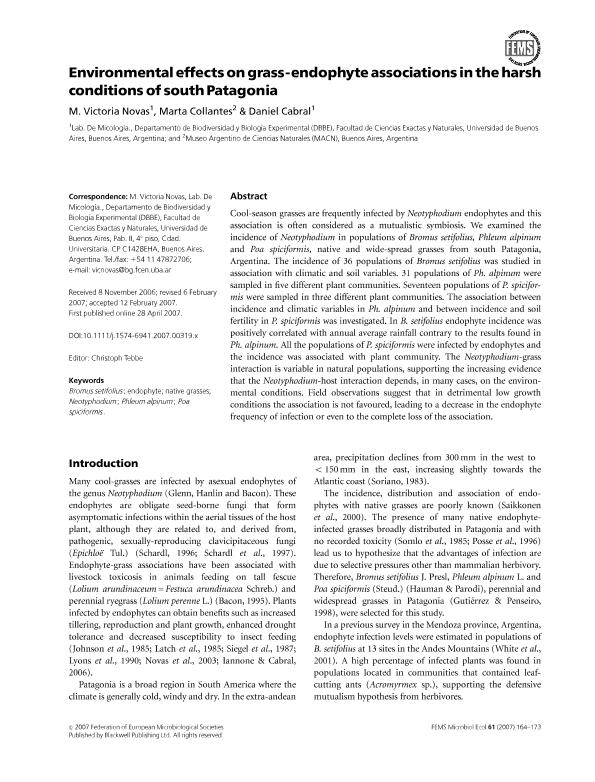Artículo
Environmental effects on grass-endophyte associations in the harsh conditions of south Patagonia
Fecha de publicación:
27/04/2007
Editorial:
Oxford University Press
Revista:
Fems Microbiology Ecology
ISSN:
0168-6496
e-ISSN:
1574-6941
Idioma:
Inglés
Tipo de recurso:
Artículo publicado
Clasificación temática:
Resumen
Cool-season grasses are frequently infected by Neotyphodium endophytes and this association is often considered as a mutualistic symbiosis. We examined the incidence of Neotyphodium in populations of Bromus setifolius, Phleum alpinum and Poa spiciformis, native and wide-spread grasses from south Patagonia, Argentina. The incidence of 36 populations of Bromus setifolius was studied in association with climatic and soil variables. 31 populations of Ph. alpinum were sampled in five different plant communities. Seventeen populations of P. spiciformis were sampled in three different plant communities. The association between incidence and climatic variables in Ph. alpinum and between incidence and soil fertility in P. spiciformis was investigated. In B. setifolius endophyte incidence was positively correlated with annual average rainfall contrary to the results found in Ph. alpinum. All the populations of P. spiciformis were infected by endophytes and the incidence was associated with plant community. The Neotyphodium-grass interaction is variable in natural populations, supporting the increasing evidence that the Neotyphodium-host interaction depends, in many cases, on the environmental conditions. Field observations suggest that in detrimental low growth conditions the association is not favoured, leading to a decrease in the endophyte frequency of infection or even to the complete loss of the association.
Archivos asociados
Licencia
Identificadores
Colecciones
Articulos(INMIBO (EX - PROPLAME))
Articulos de INSTITUTO DE MICOLOGIA Y BOTANICA
Articulos de INSTITUTO DE MICOLOGIA Y BOTANICA
Citación
Cabral, Daniel; Novas, María Victoria; Collantes, Marta Beatriz; Environmental effects on grass-endophyte associations in the harsh conditions of south Patagonia; Oxford University Press; Fems Microbiology Ecology; 61; 1; 27-4-2007; 164-173
Compartir
Altmétricas




